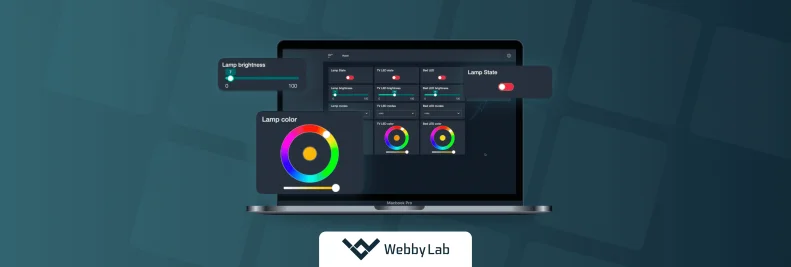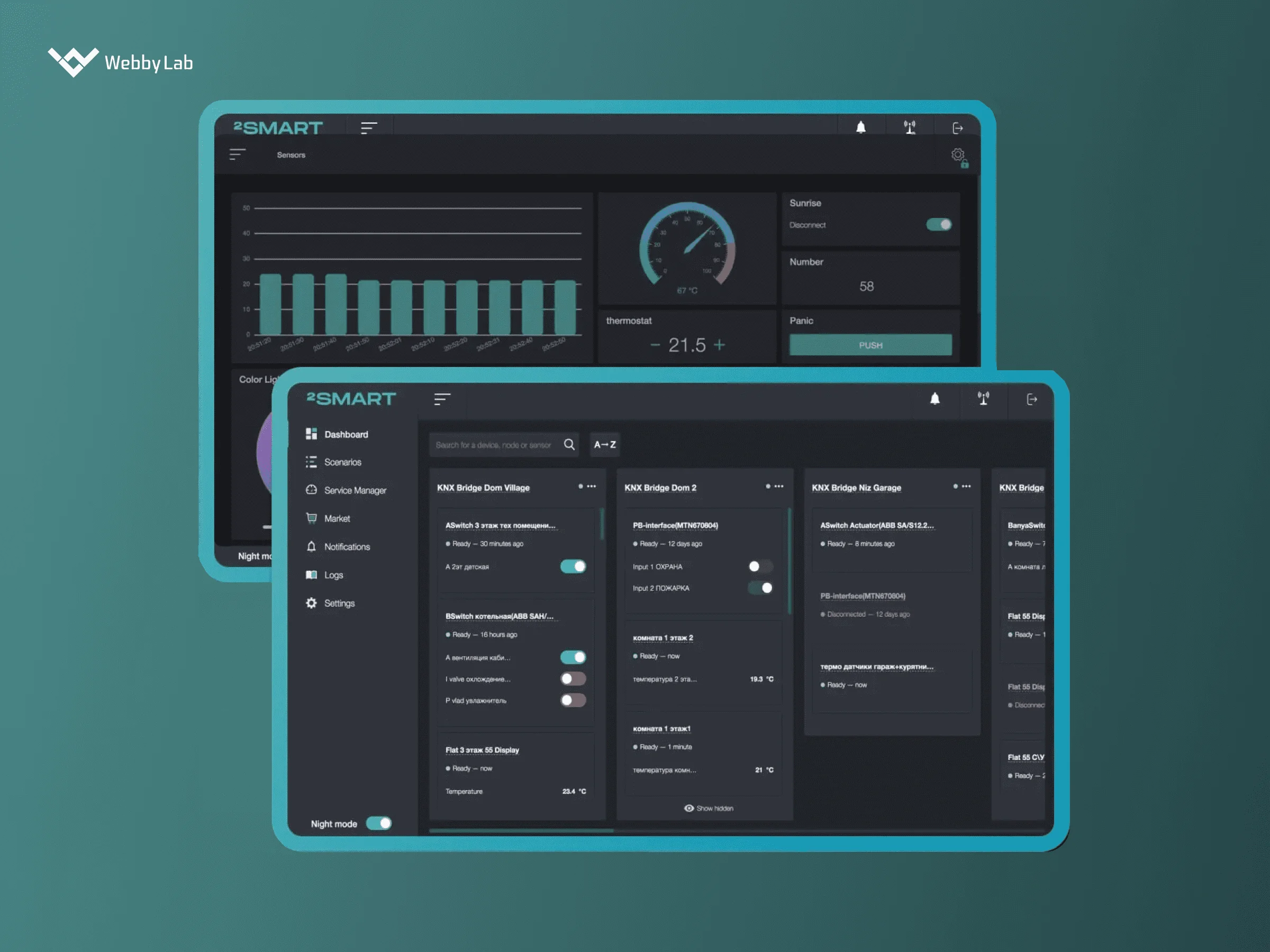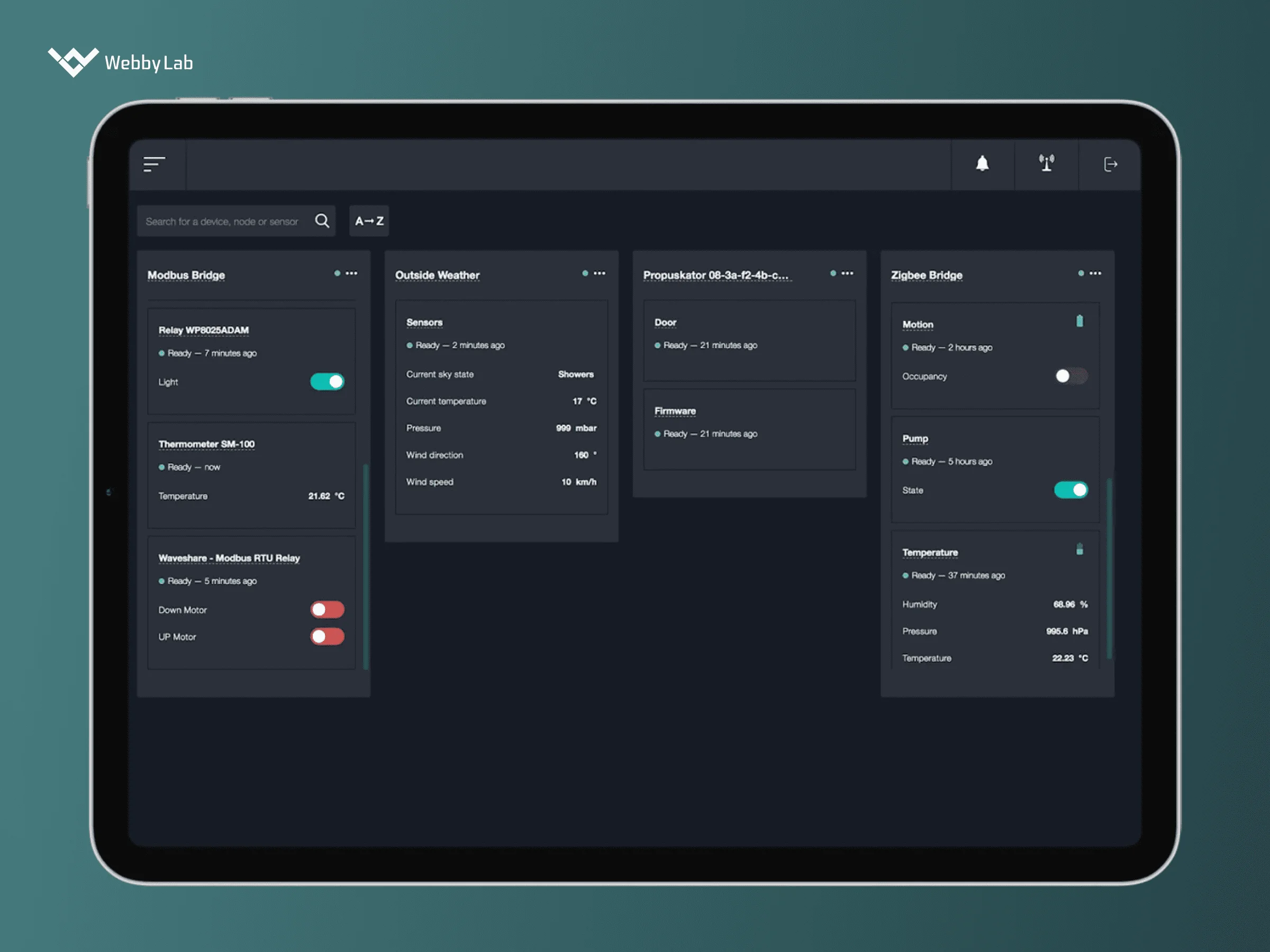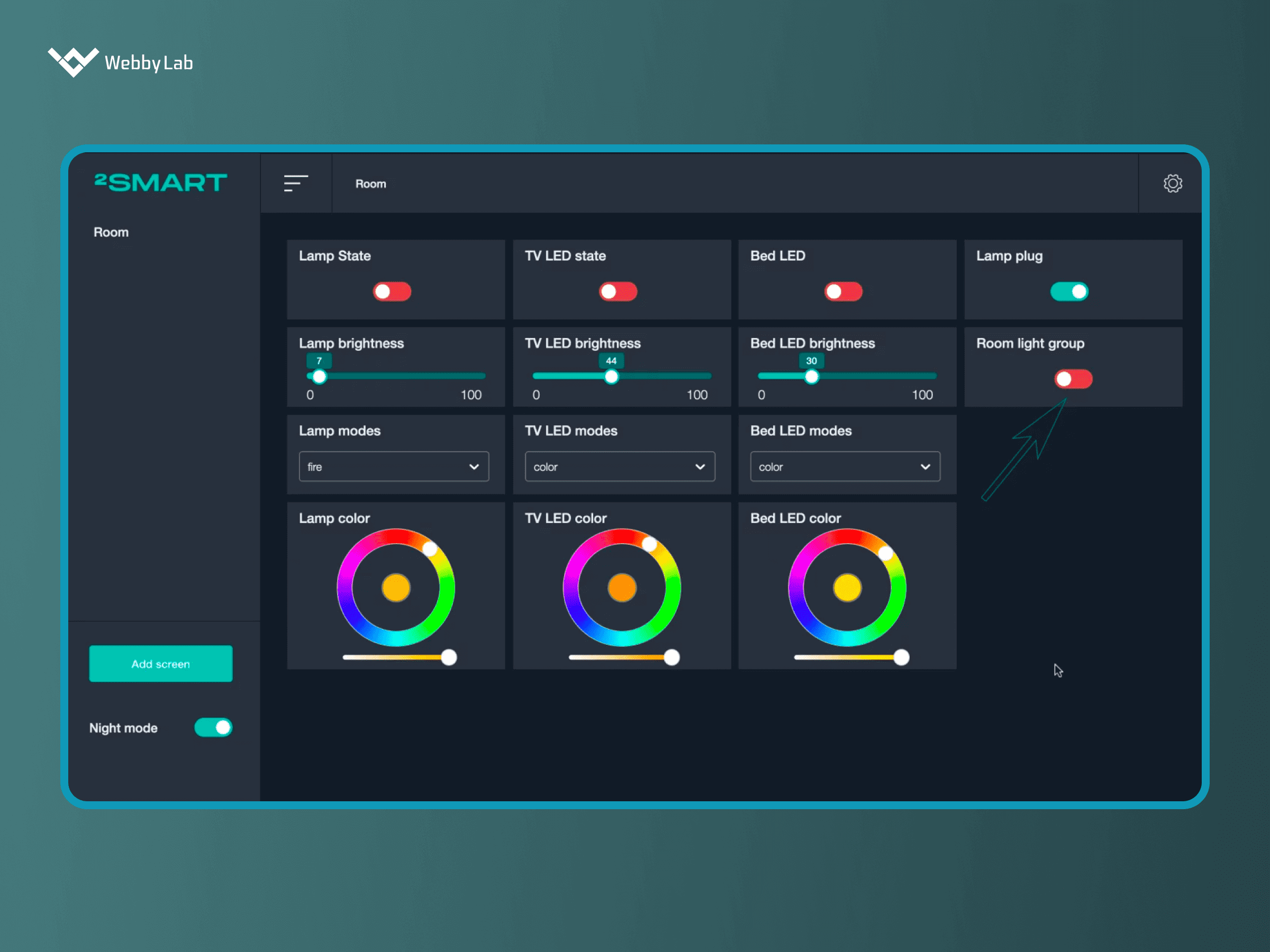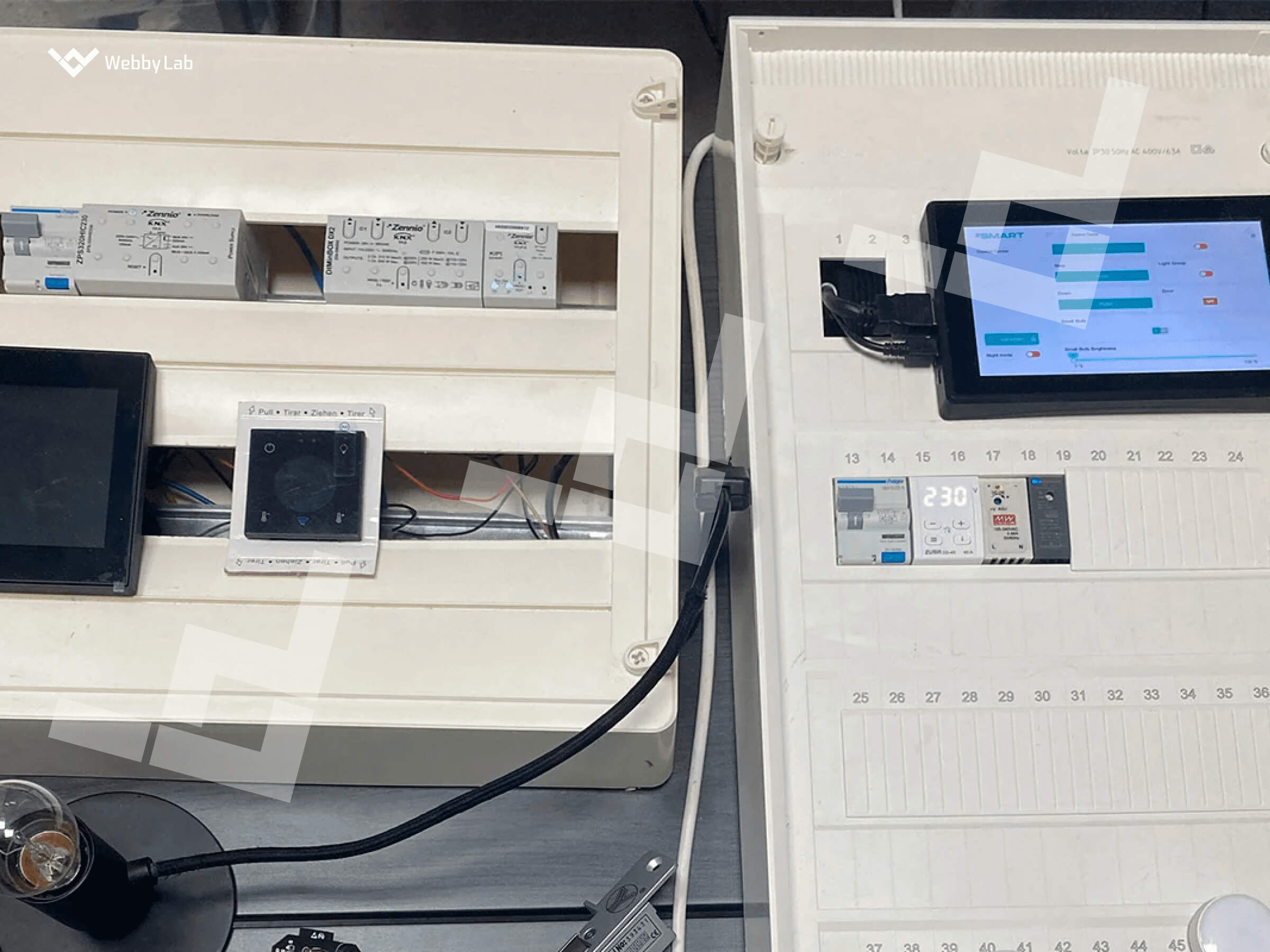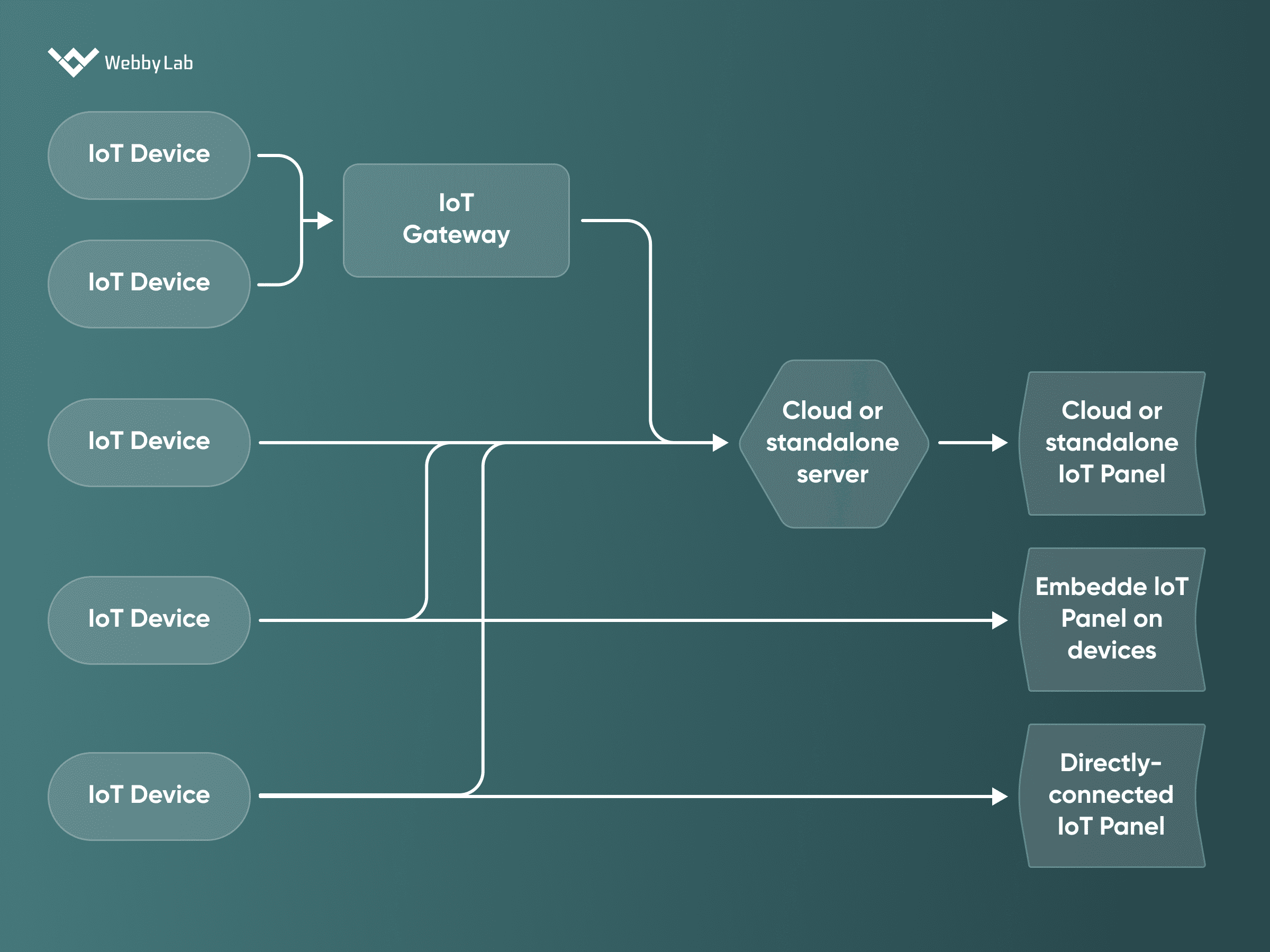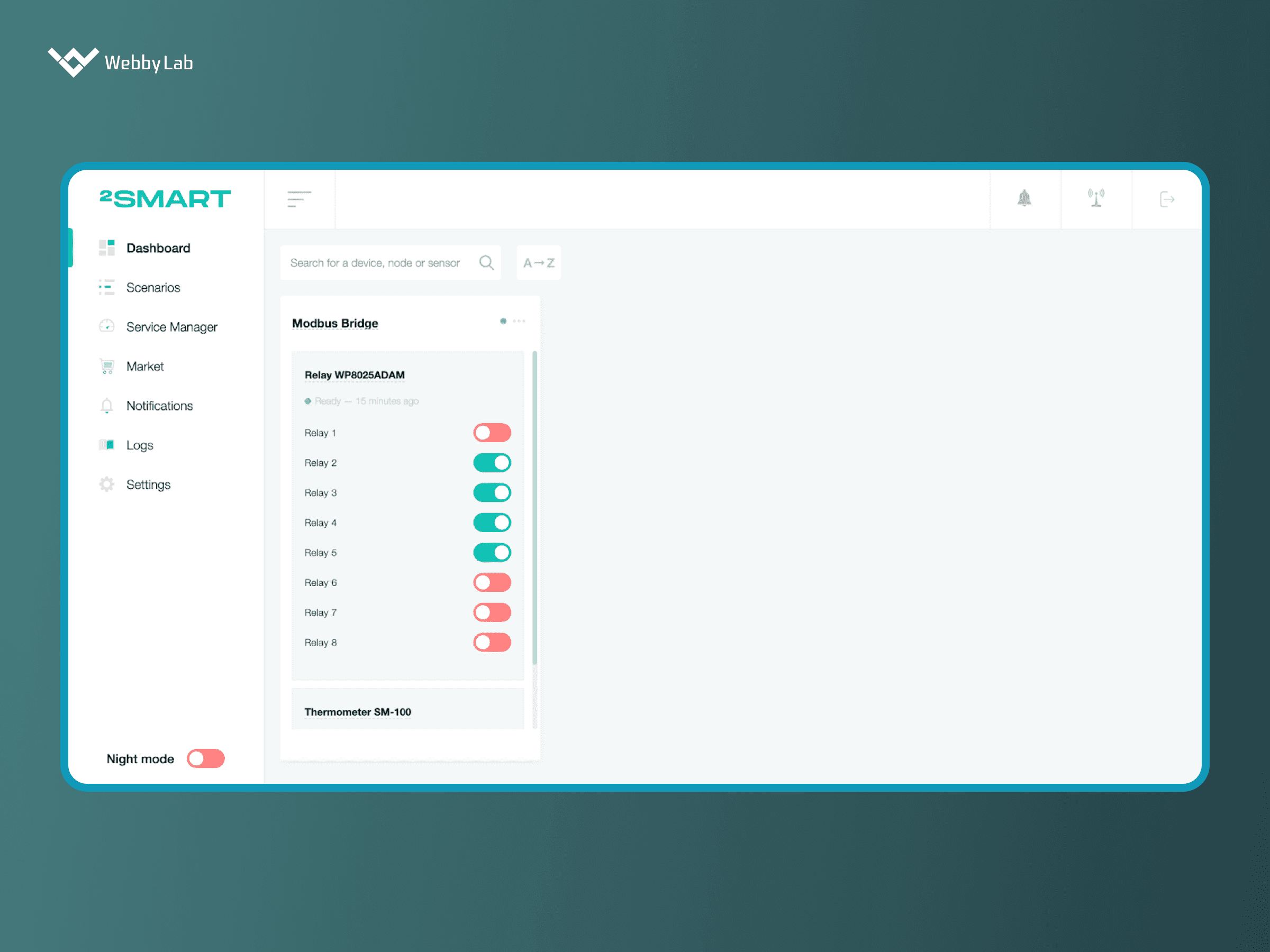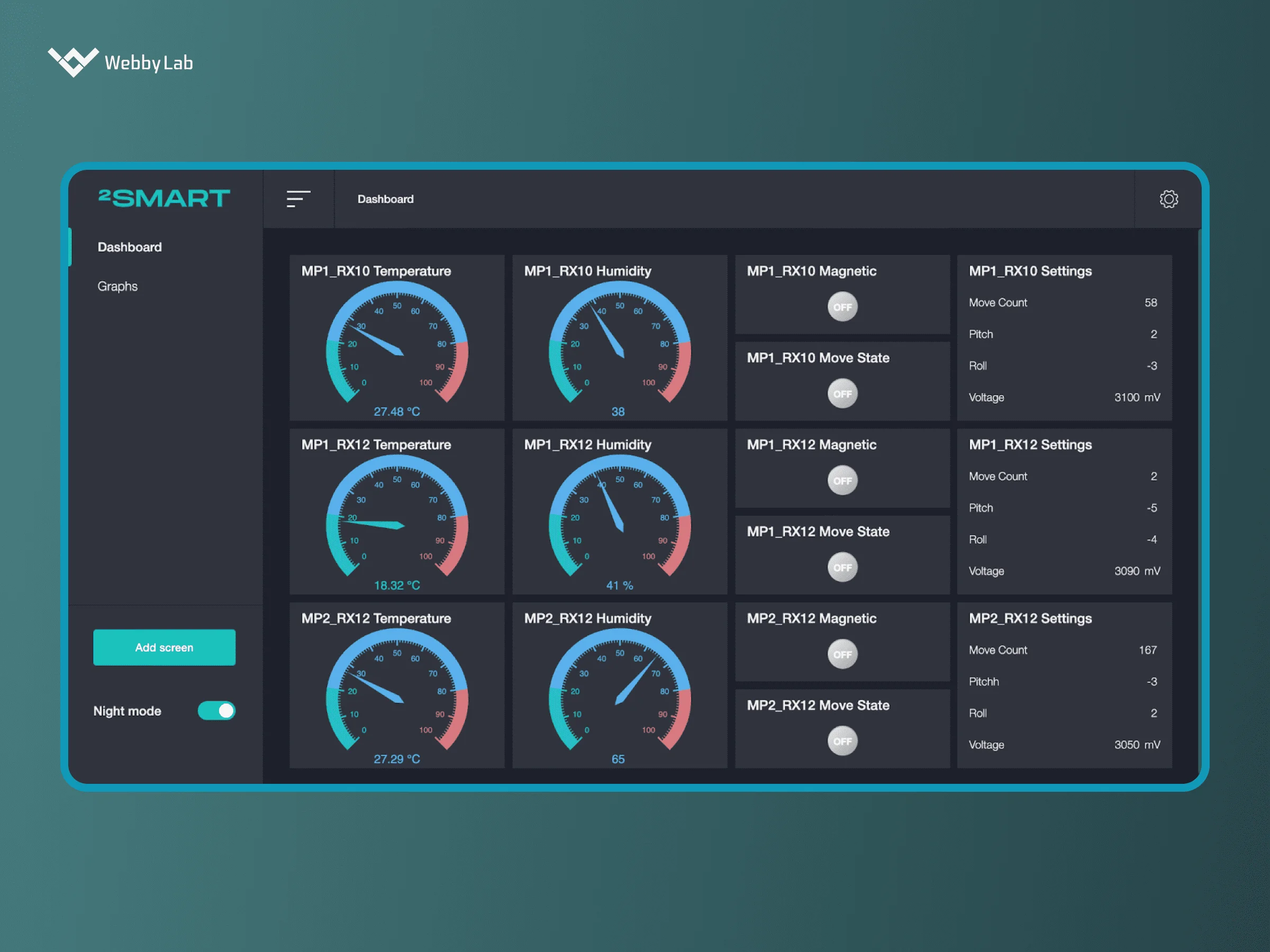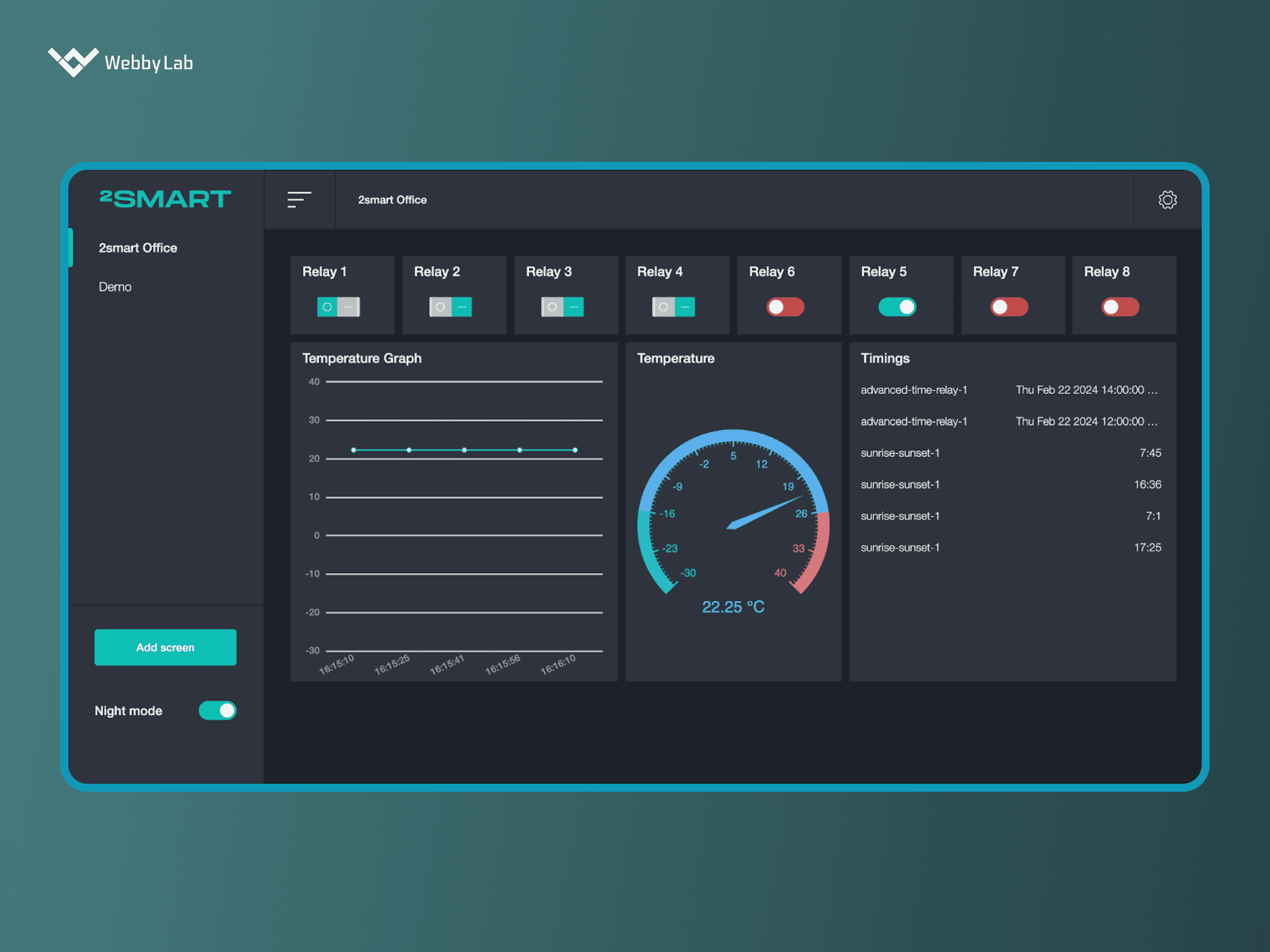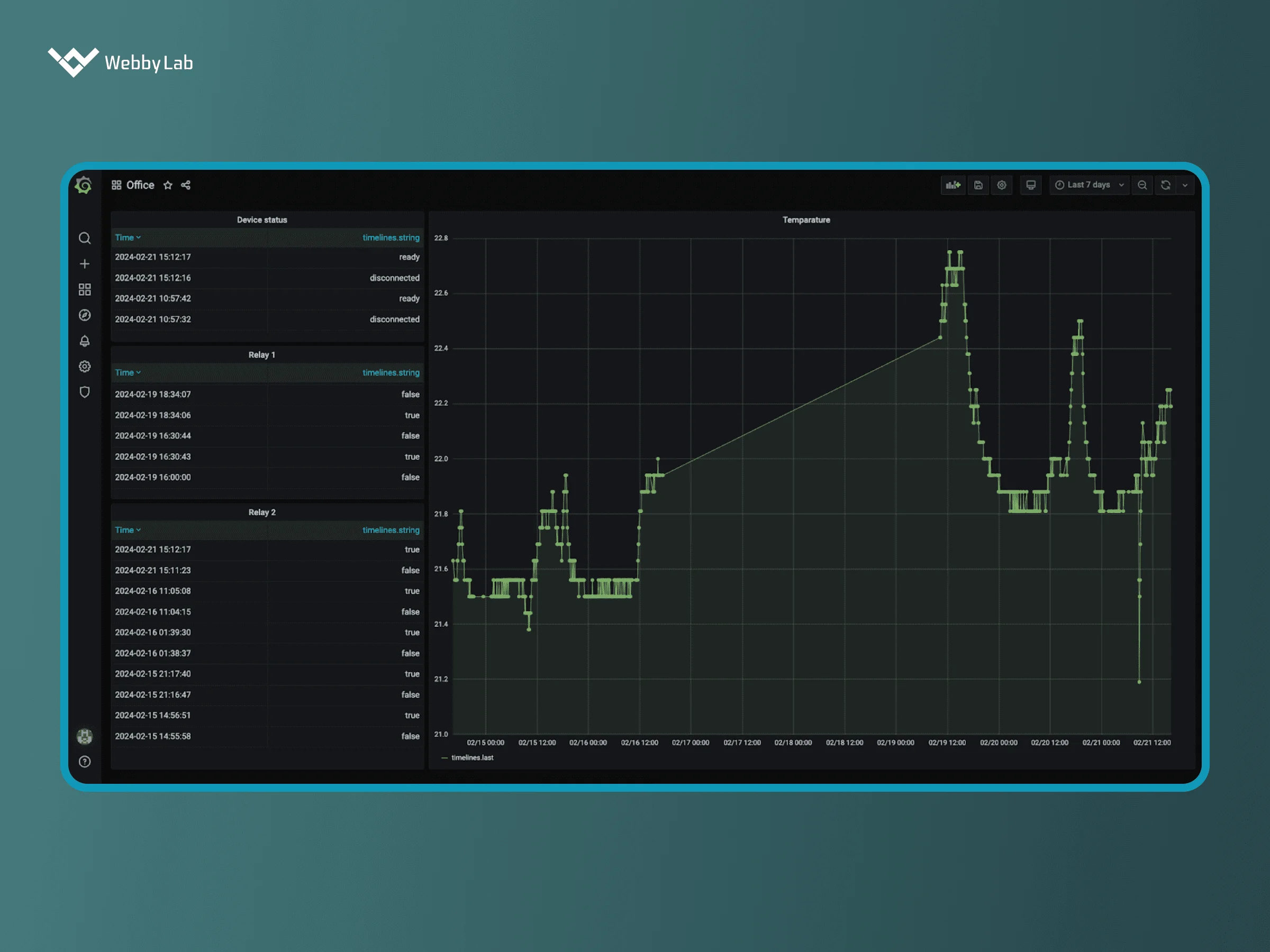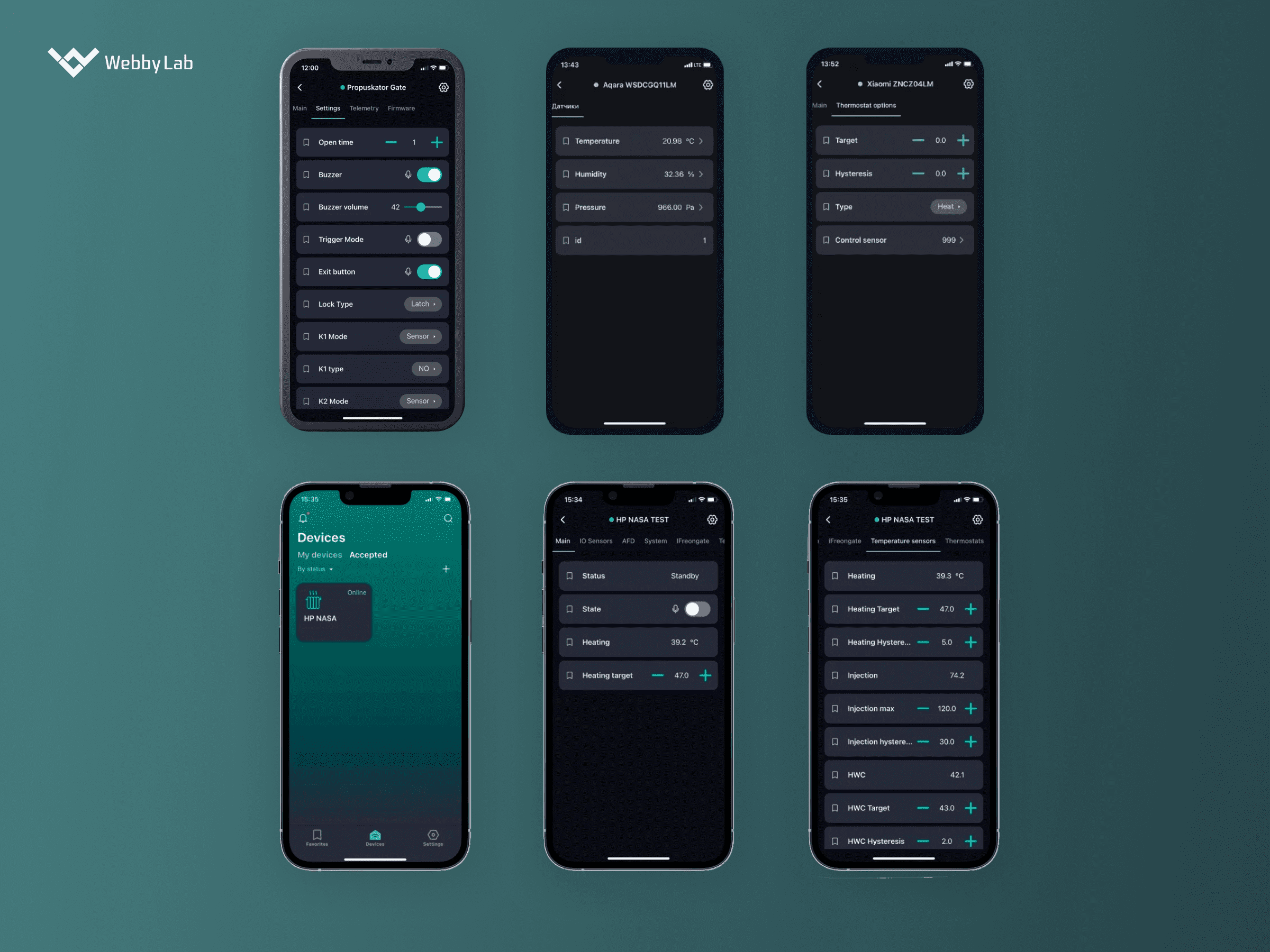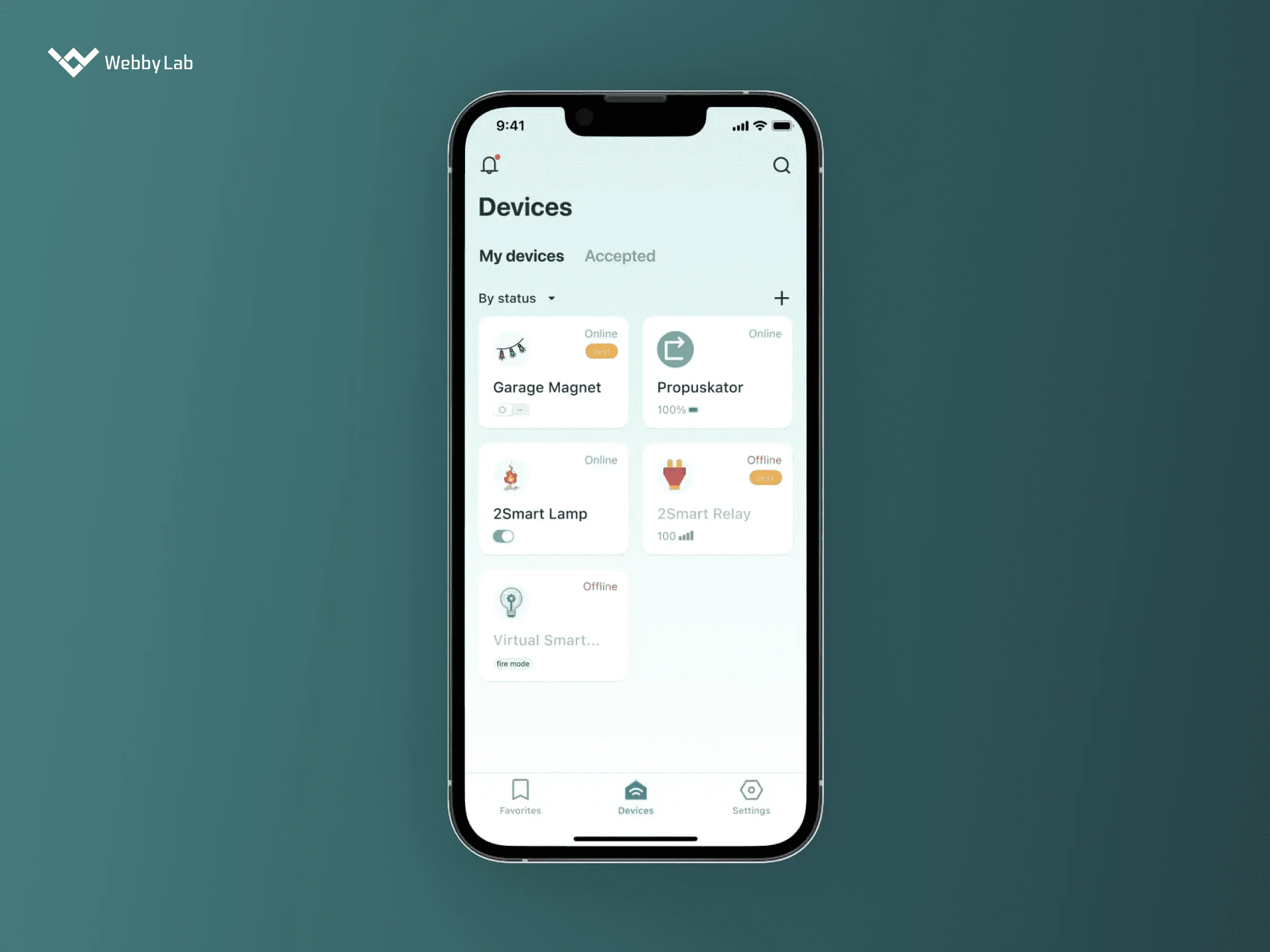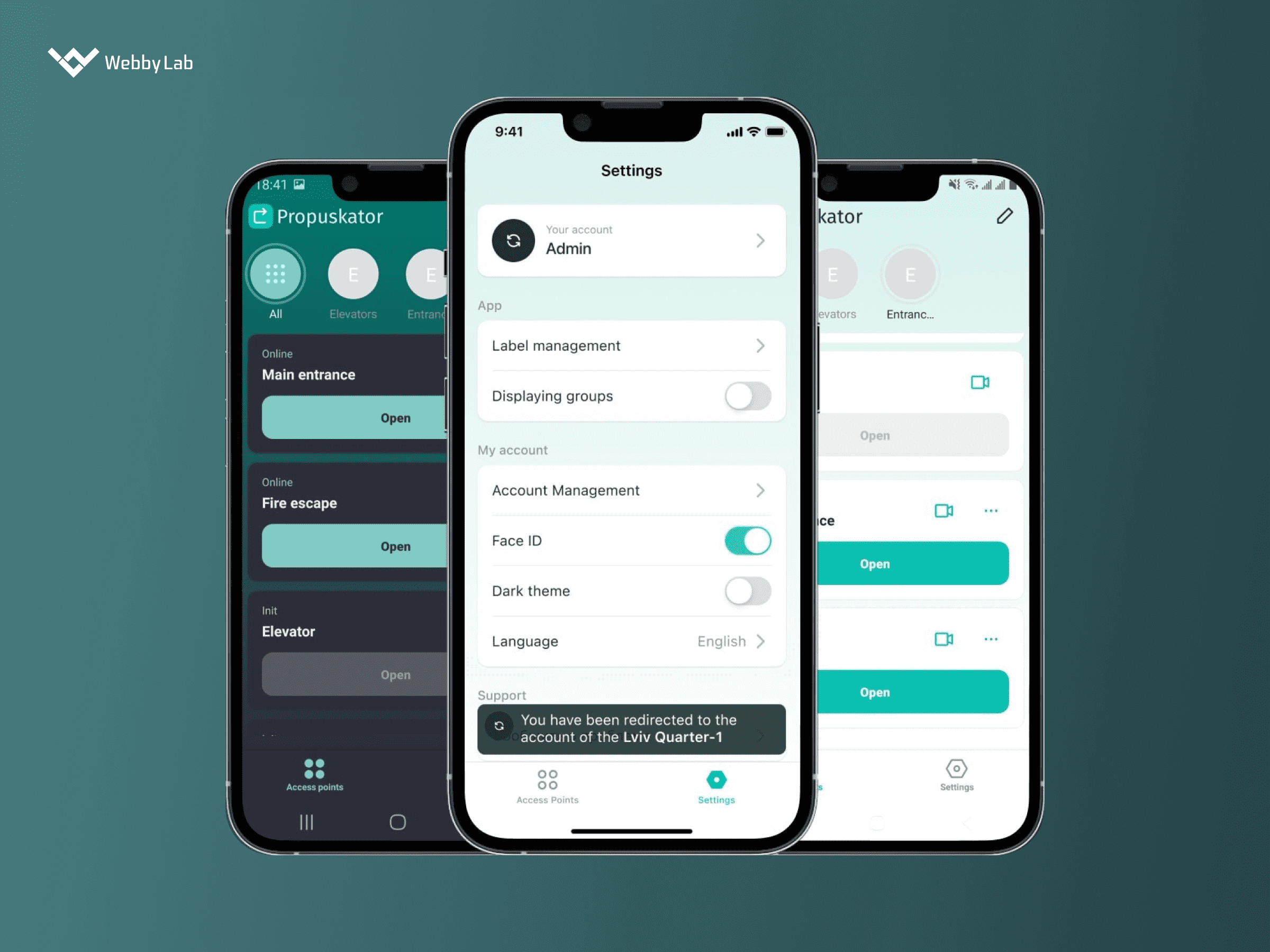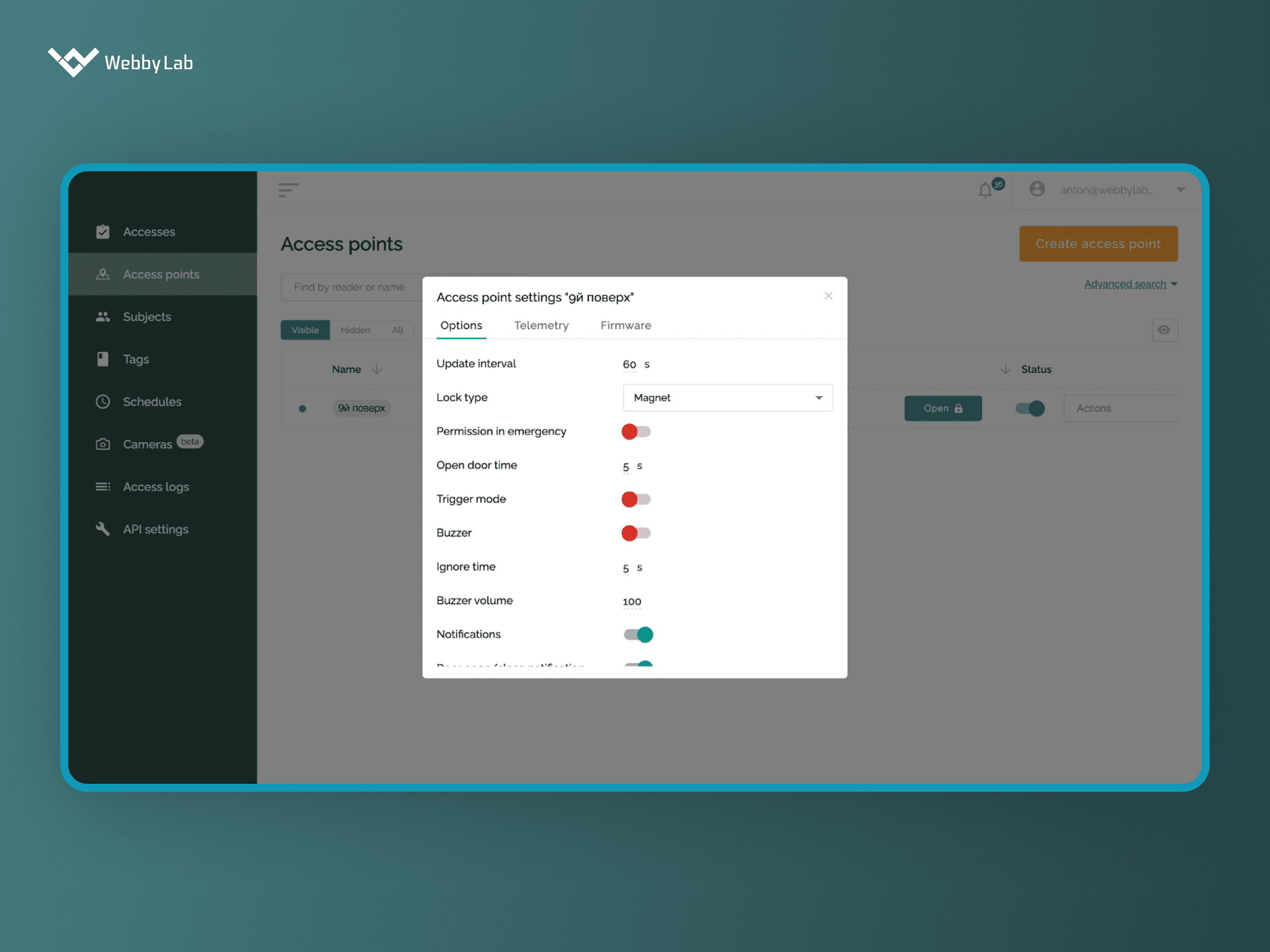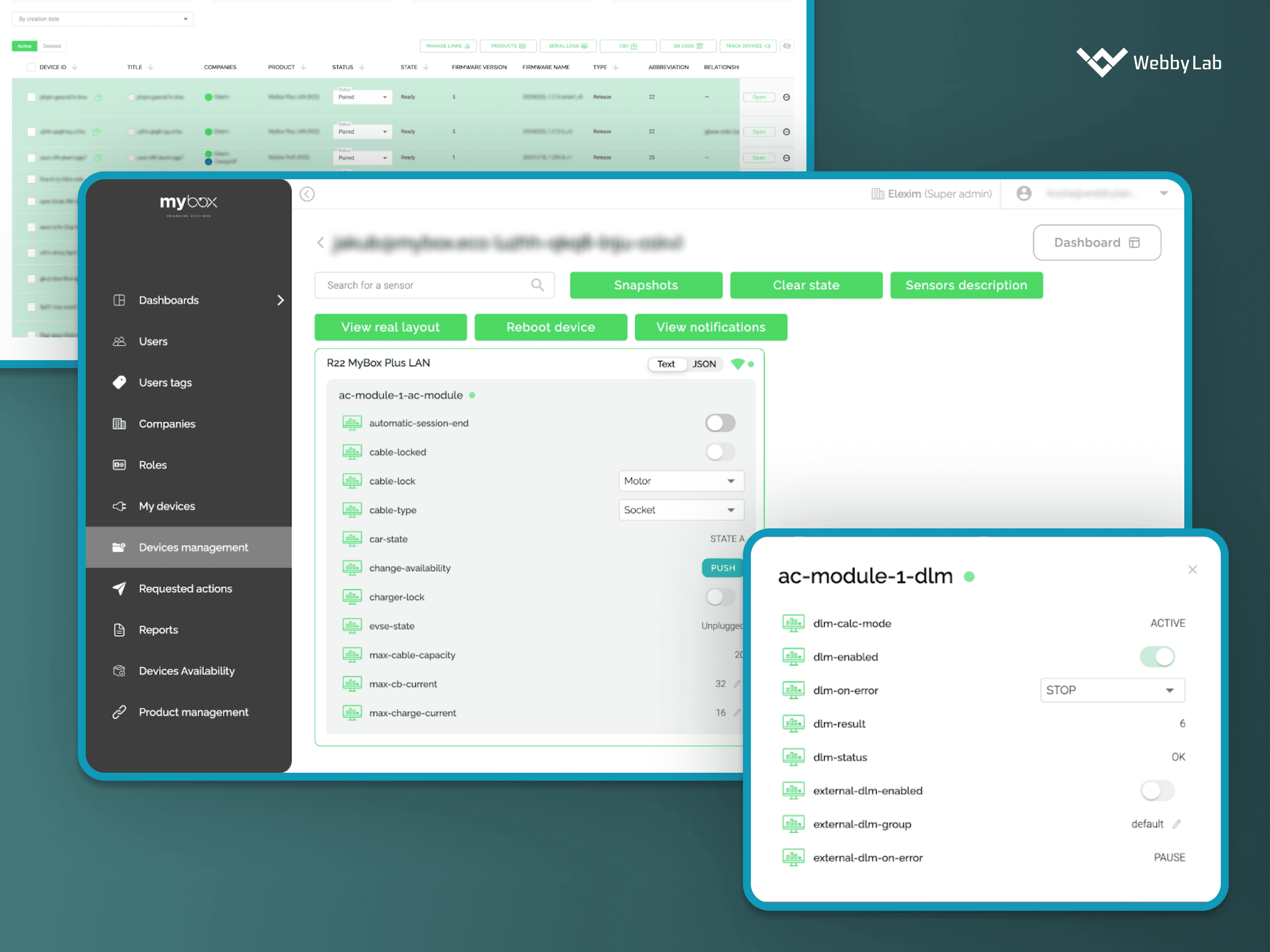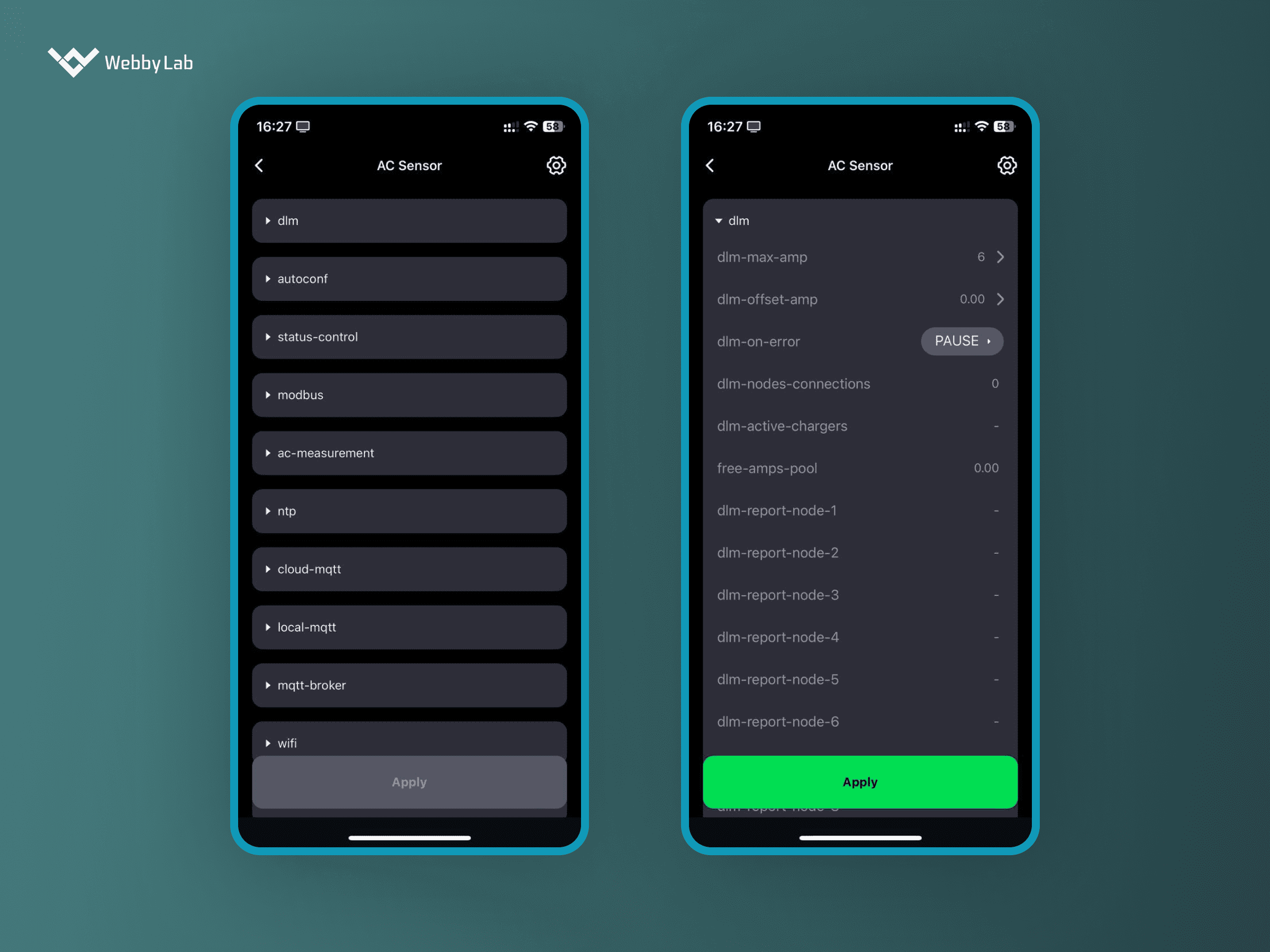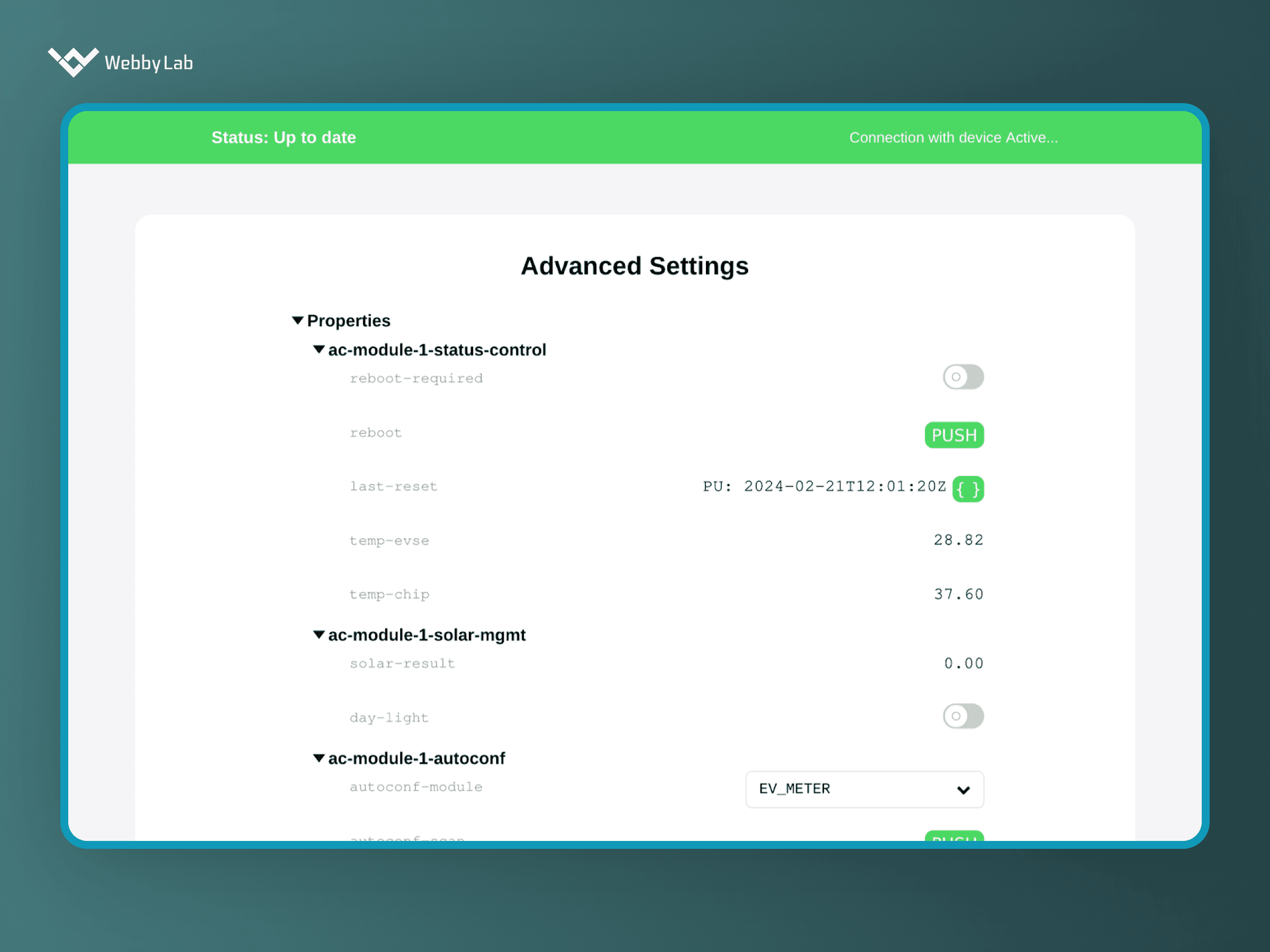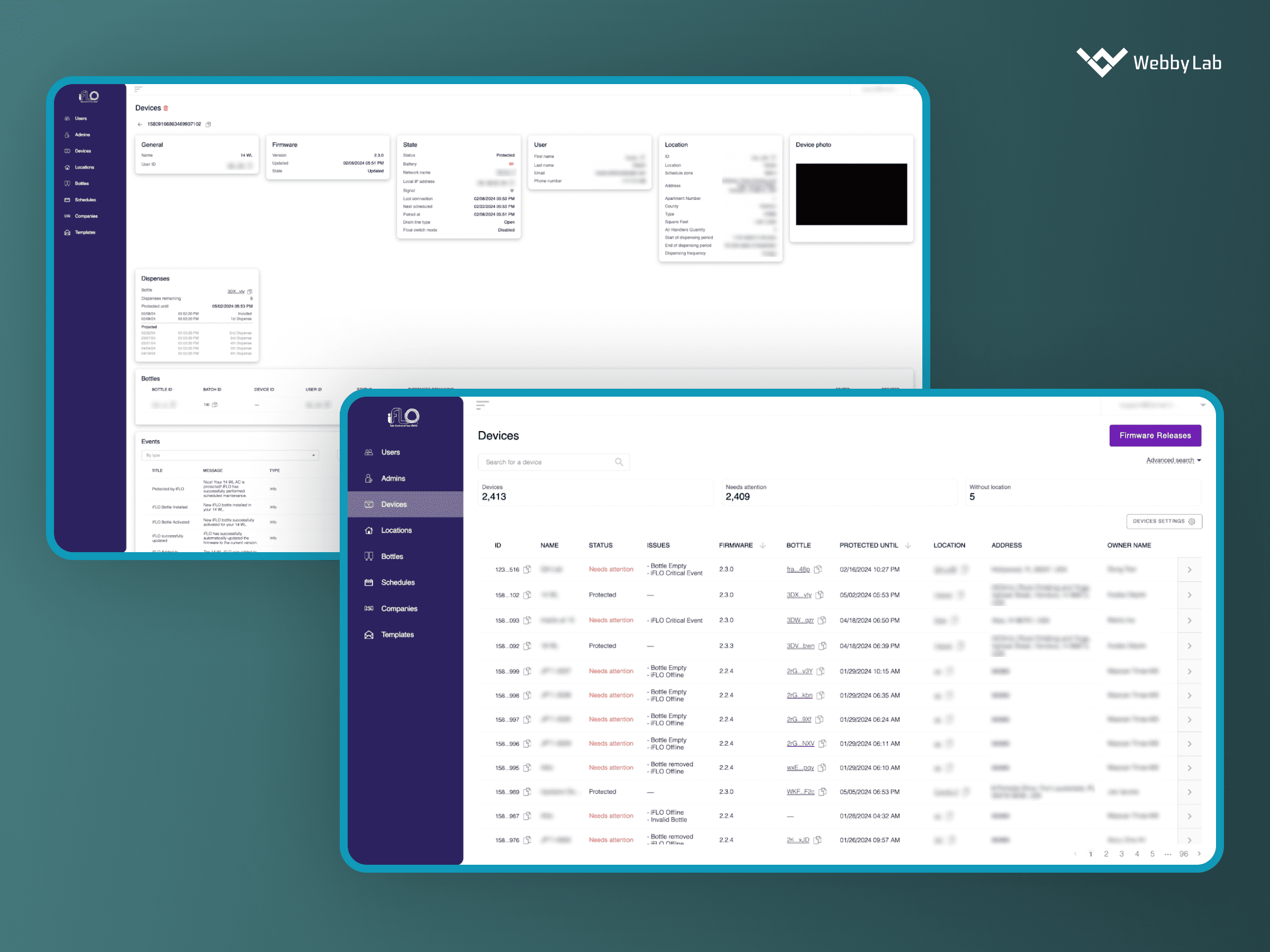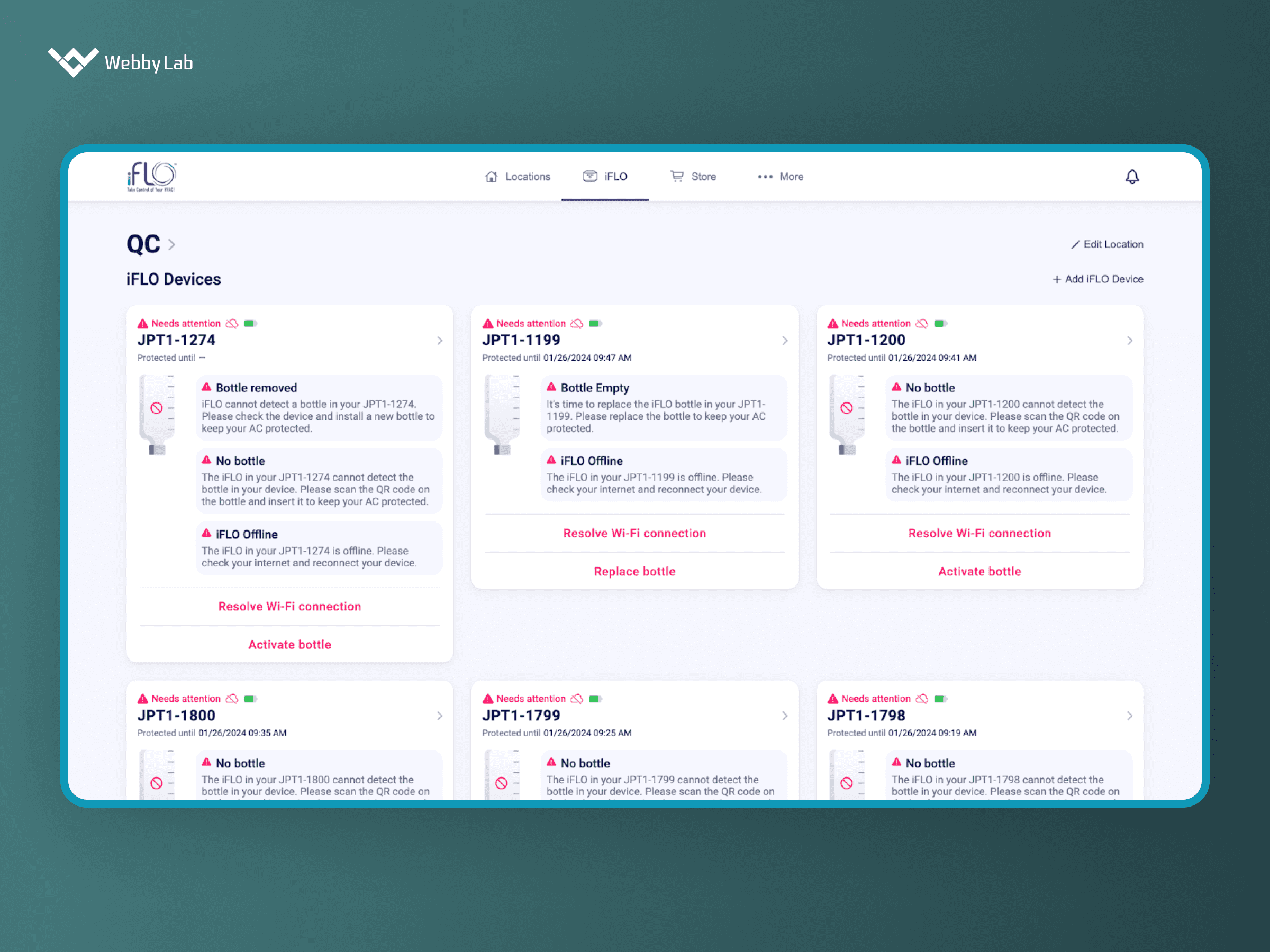IoT Monitoring Dashboard Development for IoT Devices
Written by:

Kostiantyn Oliynyk
Head of IoT at Webbylab
With a robust academic background in Telecommunication Systems Engineering, I apply my knowledge to lead innovations in the IoT domain. Starting as the first team member in the newly formed IoT department at WebbyLab, I've spearheaded its growth, fostering the expansion into embedded and hardware development alongside our core software projects. My dedication lies in pushing the boundaries of IoT technology, fostering a culture of innovation and excellence that profoundly impacts our clients' operational success.
We distinguish the IoT control panels by the end users and the device-to-panel interaction approach.
Depending on the end users, IoT dashboards are divided into consumer-oriented and admin-oriented. Following the interaction between the panel and the devices, the types of IoT control panels are cloud or standalone, embedded, and directly connected.
The industries that leverage IoT control panels comprise smart homes, manufacturing, healthcare, military, smart buildings, agriculture, and more.
An IoT control panel typically features data collection, visual data presentation, and real-time data processing. However, the dashboard may include more functionalities depending on the business needs.
The control unit is the central processing unit or microcontroller that manages the device’s operations. It receives instructions from the program code, processes sensor data, and controls actuators following the programmed logic. The control unit is often housed on a printed circuit board (PCB).
